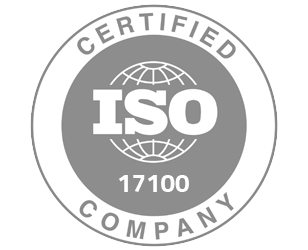
Challenges in English-Arabic Translation: What Makes It So Difficult?
Translating between English and Arabic is far from a straightforward process. These two languages come from completely different linguistic families, each with unique structures, grammar rules, and cultural influences. While Arabic relies on a rich system of root-based word formation and complex sentence structures, English follows a more straightforward, linear approach. Beyond the linguistic aspects, cultural differences play a major role in translation challenges. A simple phrase in English may require significant adaptation to convey the same meaning naturally in Arabic, and vice versa. In this article, we explore the major challenges of English-Arabic translation and why professional expertise is essential for high-quality translations.
Linguistic Differences Between English and Arabic
One of the most significant challenges in Arabic to English translation is the structural and linguistic differences between the two languages. Arabic belongs to the Semitic language family, while English is an Indo-European language. This means that they differ fundamentally in syntax, grammar, and word formation.
- Word Order: Arabic follows a Verb-Subject-Object (VSO) structure, while English primarily uses Subject-Verb-Object (SVO). This difference can cause sentences to sound unnatural if translated literally.
- Morphology: Arabic words often have root-based derivations, where a three-letter root forms various words by applying patterns and affixes. English, on the other hand, relies more on standalone vocabulary and compound words.
- Pronouns and Gender: Arabic is a gendered language, meaning nouns, verbs, and adjectives change based on gender, whereas English lacks such complexity in most cases.
-
Lack of Capitalization in Arabic: English uses capitalization to differentiate proper nouns, acronyms, and sentence beginnings, while Arabic lacks this feature. This means that translators need to rely on context to determine whether a word refers to a proper noun, a title, or a generic term.
-
Script and Dialects: Arabic is written from right to left, unlike English, which follows a left-to-right script. This difference may seem minor, but it significantly affects formatting in documents, websites, and software localization.
-
Dialects: Another challenge is the variety of Arabic dialects across different regions. While Modern Standard Arabic (MSA) is used for formal communication, dialects such as Egyptian, Levantine, and Gulf Arabic differ greatly in vocabulary, pronunciation, and grammar. This means that a single Arabic to English translation may need adjustments depending on the target audience.
- Idioms and Proverbs: Arabic is rich in metaphors and expressions that cannot be translated literally. For example, "في العجلة الندامة" (Fi al-‘ajala al-nadama) translates directly to "In haste, regret," but the English equivalent would be "Haste makes waste."
- Honorifics and Formality: Arabic tends to use more formal expressions, especially in business and legal contexts. English, on the other hand, often favors direct and concise communication.
Challenges in Technical and Legal Translation
Certain industries, such as legal, medical, and technical fields, require absolute accuracy in translation. Misinterpretation of terms can lead to serious consequences, such as contract disputes, medical errors, or compliance issues.
- Legal Translation: Arabic and English legal systems are based on different frameworks—common law in English-speaking countries vs. Sharia-based or civil law systems in Arabic-speaking nations. This makes legal translation particularly challenging, as some legal terms may not have a direct equivalent.
- Medical and Technical Translation: Many scientific and technical terms in Arabic are transliterated from English, while others require precise adaptation to maintain clarity.
Using a professional Arabic to English document translation service ensures that the translated text remains legally and technically accurate.
English-Arabic Translation Services by PoliLingua
- Legal Translation – Precise translation of contracts, court rulings, and compliance documents, ensuring legal accuracy and adherence to jurisdictional requirements.
- Business Translation – Localization of corporate reports, financial statements, and marketing materials to align with industry standards and cultural nuances.
- Medical Translation – Expert handling of medical records, clinical trial data, and pharmaceutical documentation, maintaining clarity and regulatory compliance.
- Scientific Translation – Accurate adaptation of research papers, academic journals, and technical studies, preserving terminology and scientific integrity.
- Technical Translation – Clear and precise translation of user manuals, product specifications, and engineering documents for accurate application.
- IT and Telecommunication Translation – Specialized translation of software documentation, network security materials, and user guides, ensuring technical accuracy.
- Tourism and Hospitality Translation – Engaging translations for travel guides, hotel brochures, and promotional content tailored for Arabic-speaking tourists
English-Arabic translation presents unique challenges due to structural differences, cultural nuances, and specialized terminology. The complexity increases in fields such as legal, medical, technical, and business translation, where precision is critical. PoliLingua’s English-Arabic translation services ensure accurate, industry-specific, and culturally adapted translations. Whether translating contracts, corporate materials, research papers, or technical documents, experienced linguists provide clarity and precision.







